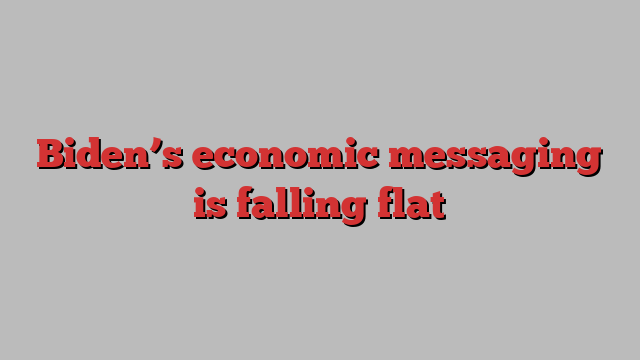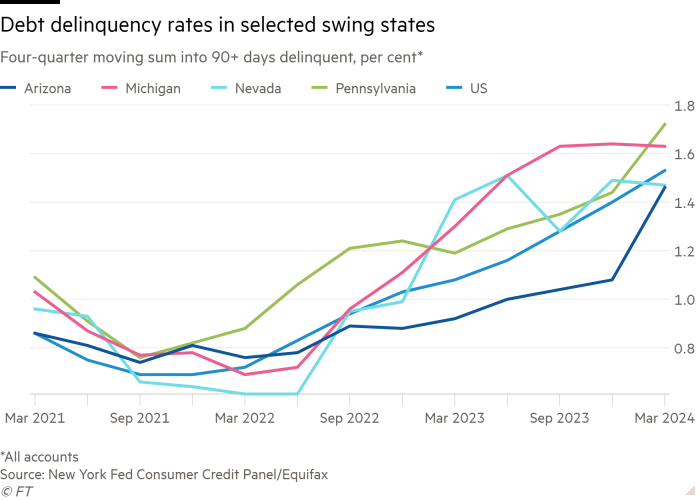
Unlock the Editor’s Digest for free
Roula Khalaf, Editor of the FT, selects her favourite stories in this weekly newsletter.
On the surface America’s economy is booming. Inflation is edging down, unemployment is low, and economic growth is on track for 2.7 per cent this year — double the rate of any other G7 country, according to the IMF. Yet, Joe Biden’s approval ratings remain poor. The latest FT-Michigan Ross poll shows voters are in fact growing less supportive of the president’s handling of the economy.
This is not as perplexing as some have made it out to be. The US is the world’s fourth-largest country by land area, and the third most populous. That means national data is much less reflective of the economic reality on the ground, particularly given America’s vast income and regional inequalities. Touting aggregate numbers, as Biden has done, can sound tone deaf.
For starters, inflation may be easing but the overall price level is still around 20 per cent higher than in January 2021, when Biden was inaugurated. Inflation remains the biggest concern for voters, according to surveys. Food and rental costs are still hitting many Americans hard, and by different amounts depending on the state. As for the jobs market, although unemployment is low, the fear of losing one’s job over the coming year has risen notably among those on lower incomes. Indeed, small businesses have been dialling back their hiring plans.
The US Federal Reserve’s interest rate rises have also affected consumers and businesses differently. “Hand-to-mouth” households — which have large spending commitments compared with their regular income and assets — have had a tough time. The share of Americans who have maxed out their credit cards is climbing, as are the numbers moving into delinquency across all debt types. Those who have been able to fix mortgages at low rates have been relatively insulated.
However tempting it might be, harping on about America’s great headline statistics risks sounding out of touch to many Americans. The president’s state of the nation address in March was littered with superlatives about the economy. In a CNN interview this month, Biden claimed the polls were wrong and that Americans struggling with inflation had more cash in their pockets, saying: “They have the money to spend.” He also pinned higher prices on “corporate greed”, which will not play well with business.
Biden’s messaging risks negating the experience of voters on the ground, and can raise doubts over his grasp of the economy. That is not a good look for the campaign, particularly with pandemic-era stimulus cheques, bearing Donald Trump’s name, still fresh in the memory. Getting the tone right matters when snippets can go viral on social media.

There is little Biden can do to materially improve the economic realities in the six months remaining until the vote. But showing more empathy with struggling households would help politically. Trump currently has the edge over Biden in key swing states. Nevada and Arizona have experienced some of the highest price level increases nationally since January 2021. Some are experiencing high debt delinquency rates too. The president’s recent upping of tariffs on Chinese imports could raise his appeal among blue-collar workers, particularly in Michigan and Pennsylvania, but Trump is prepared to go even further on trade levies.
One problem for Biden is that the robust national economic picture may not even last until November. High rates are increasingly biting the economy. Consumer confidence is dropping, hiring is slowing and growth came in below expectations in the first quarter. If Biden continues to gloss over the local-level realities, he could end up looking even more detached.